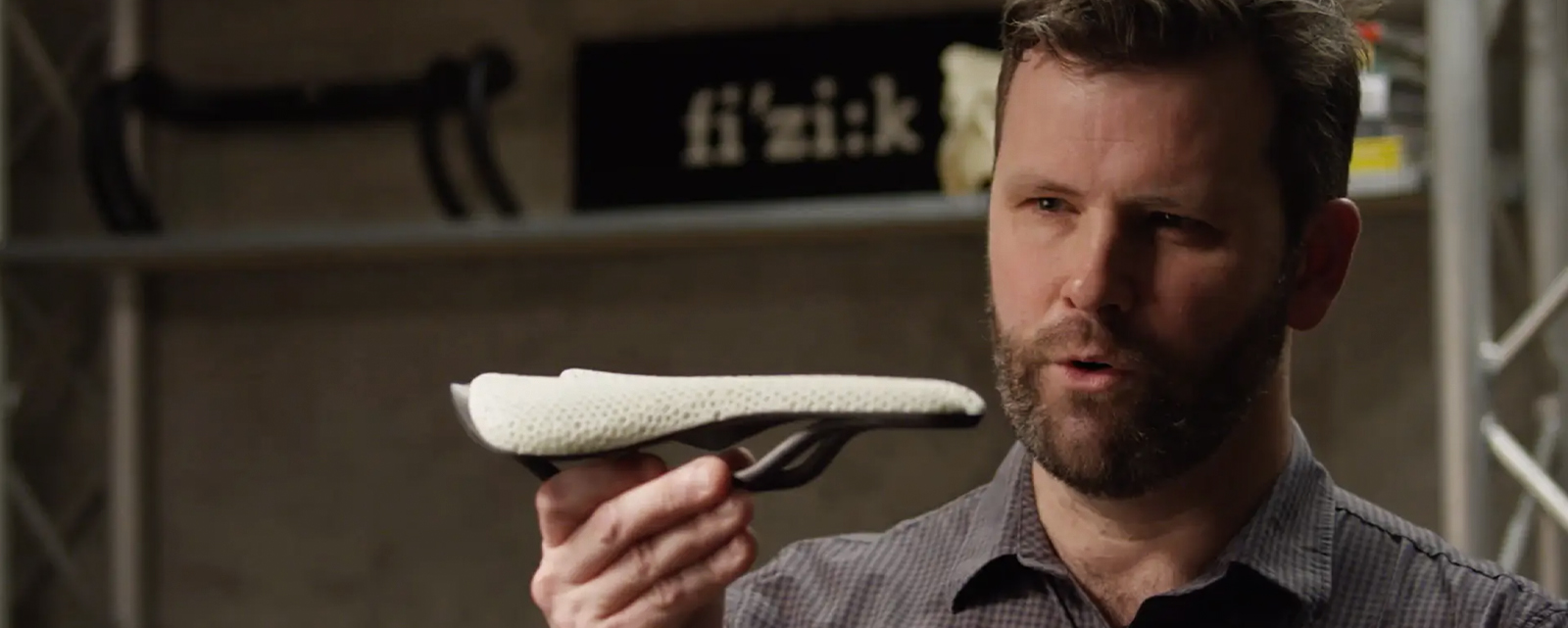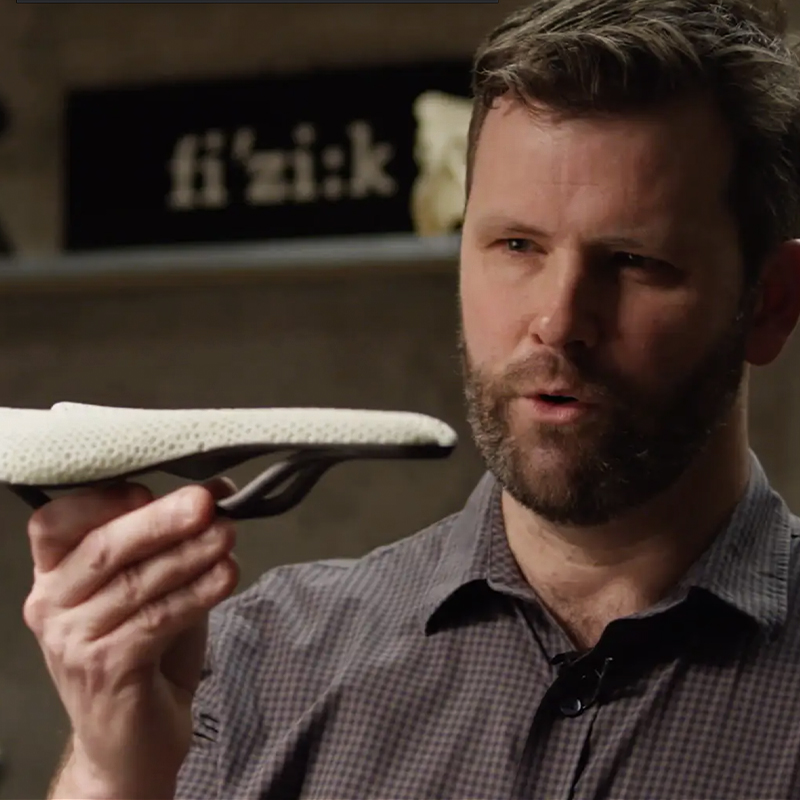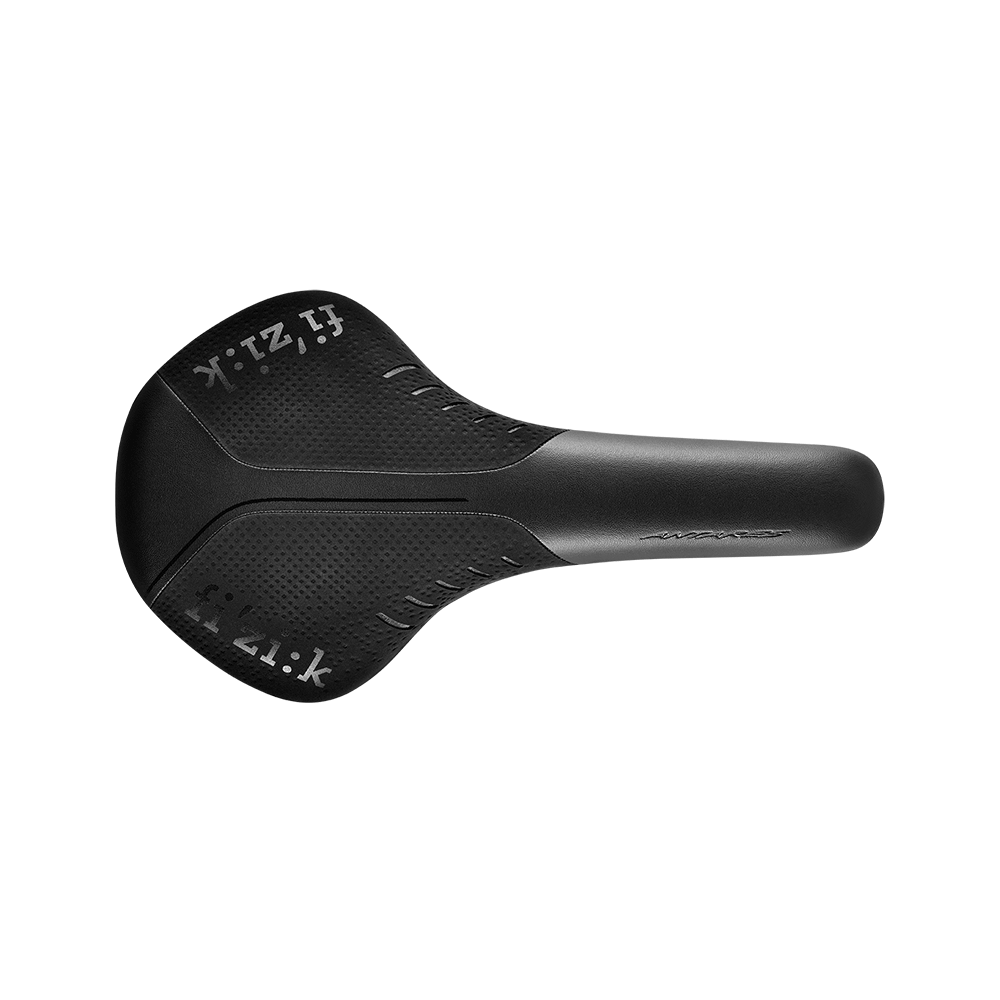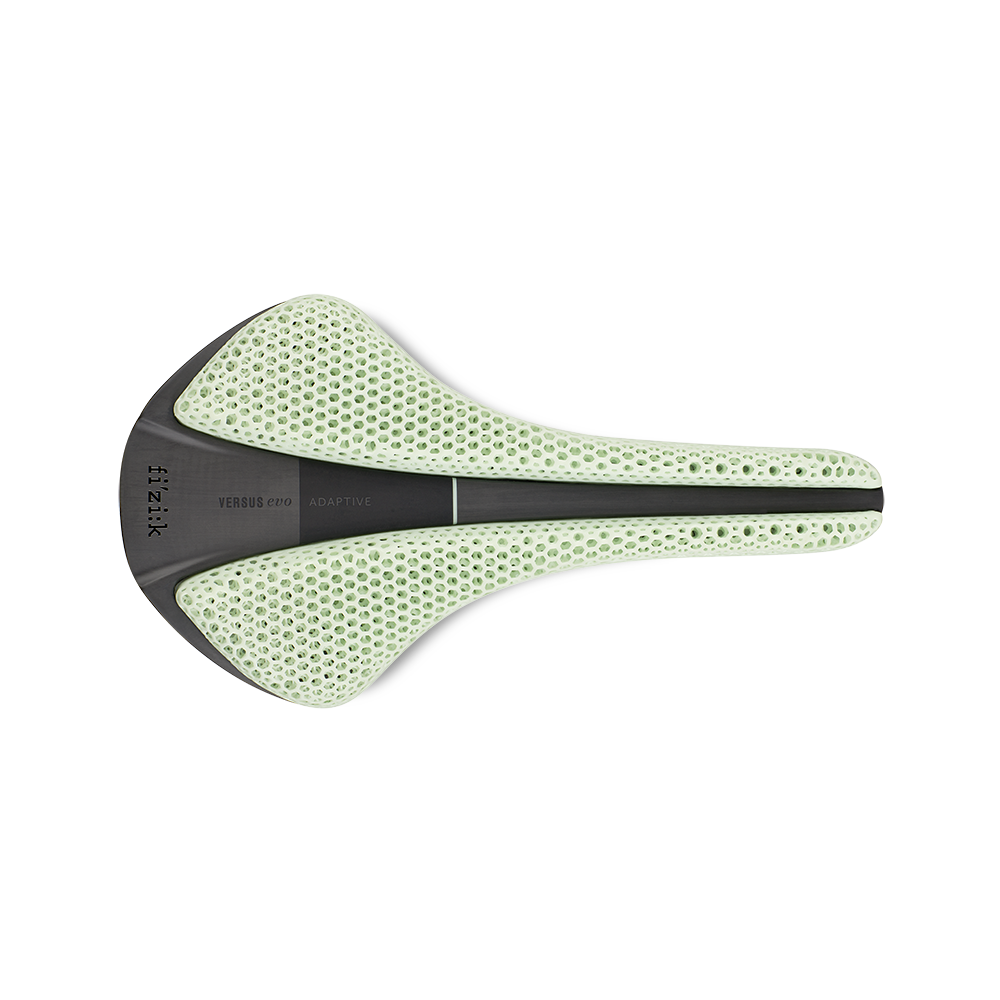As part of our Phil Burt Tutorial Series, we are joined by leading Physiotherapist at British Cycling and bike fit expert, Phil Burt, to examine the differences in saddle design and how they apply to finding the right fit for every rider. For our third instalment, we are exploring the all-important decision that follows making the right saddle choice: dialling in saddle position.
So you’ve been through all the steps of selecting the right saddle, choosing the ideal surface, size, discipline and design for your body type and style of riding, and you’ve found the perfect saddle. But there’s still a critical step in finalising your ride—setting saddle position. After all, even the best bike saddle is only as good as its position on the bike.
In setting saddle position, there are a few crucial considerations, with each dependent on the individual rider, bike and style of riding. Read on to learn about them all.
STRAIGHTNESS
The first adjustment when fitting any bike saddle is also the simplest: is your saddle straight? No matter the bike, rider or discipline, every bike saddle should run parallel to the top tube, pointed straight ahead towards the handlebars and not skewed to one side or the other. On bikes featuring aerodynamic seat posts that fit proprietary seat tubes, this step can be skipped, as these bikes don’t allow for saddle twist.
But on traditional bikes with round seat posts and tubes, adjustments can be made by simply loosening the seat binder bolt and gently turning the saddle until it’s perfectly straight, using your bike’s top-tube to gauge straightness, then retightening to manufacturer recommended specs when finished.
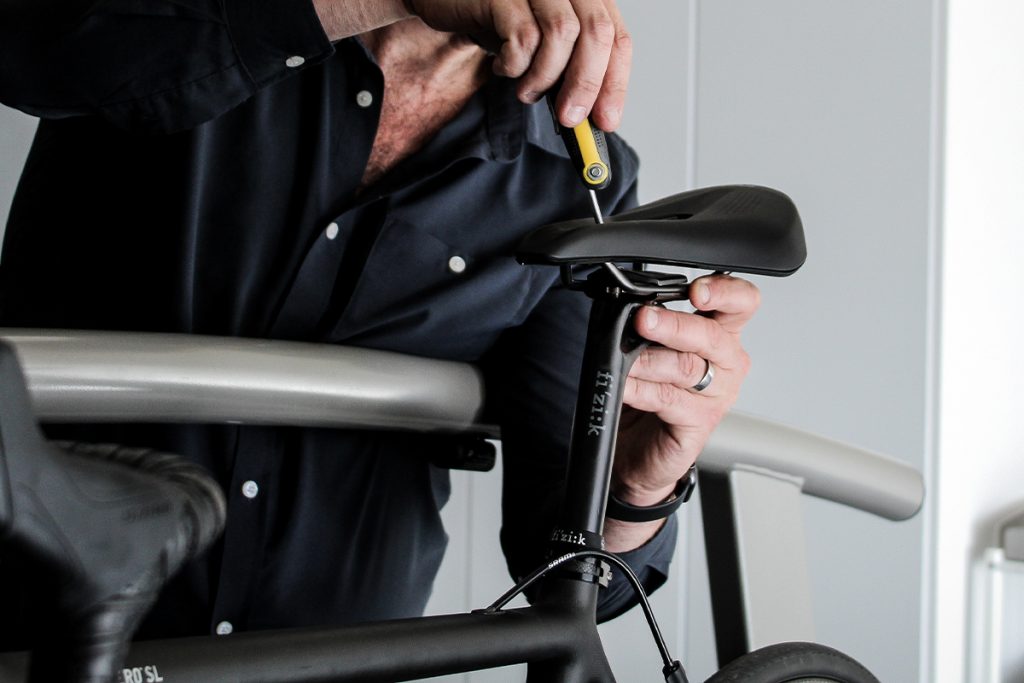
HEIGHTH
The next setting to consider is saddle height, often adjusted at the same time as straightness. Put simply, saddle height means the distance between the top of the saddle and the bottom of your pedal stroke. Set your saddle too low and the result will be an inefficient pedal stroke and wasted energy; set it too high and you risk overextending knees and hips and an uneven, uncomfortable pedal stroke.
When setting saddle height, a good starting point is to aim for a very slight bend at the knee when fully extended to the bottom range of the pedal stroke. From there, minor adjustments can be made to find the perfect fit. Or, visit your local fizik dealer for help in fine tuning.
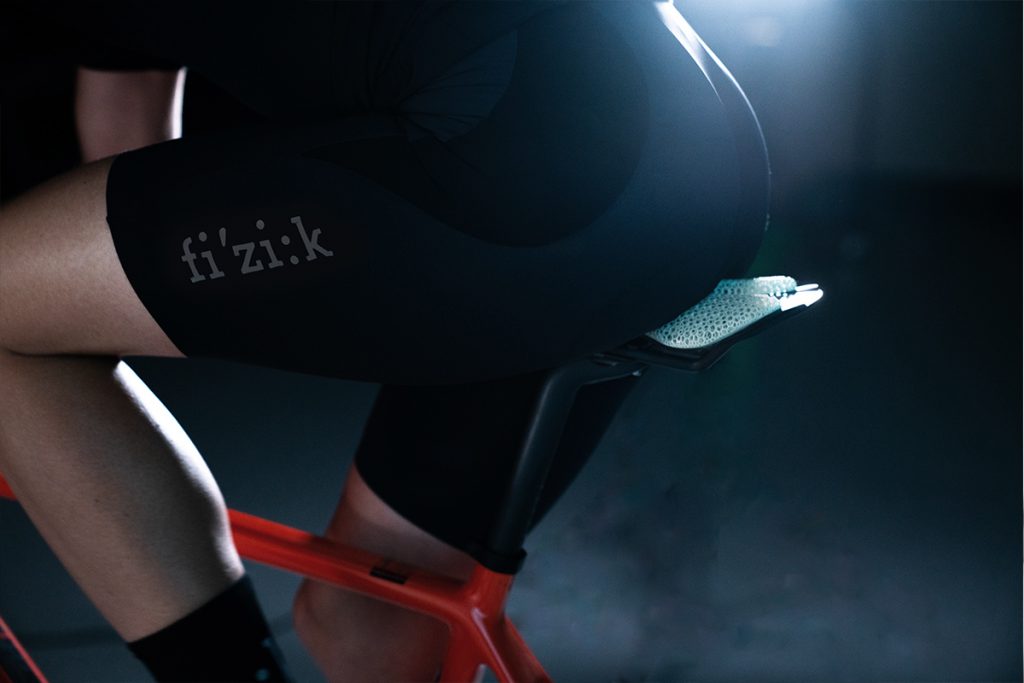
TILT
Saddle tilt, or the angle at which your saddle sits in relation to the ground, is another important consideration. How saddle tilt is adjusted depends on your specific seat post; finding the right angle depends on you. Most riders will favour a neutral saddle tilt, with the surface of the saddle parallel to the ground, although riders who frequently adopt forward, aero riding positions may prefer a bit of downward tilt. Saddle tilt adjustments are typically minor, with small changes having potentially large impacts on comfort and performance.
A small adjustment to downward tilt can relieve unwanted pressure, but angle a saddle too far down and it becomes hard to maintain a planted position—and can even shift weight too far forward, leading to hand numbness and upper body fatigue.
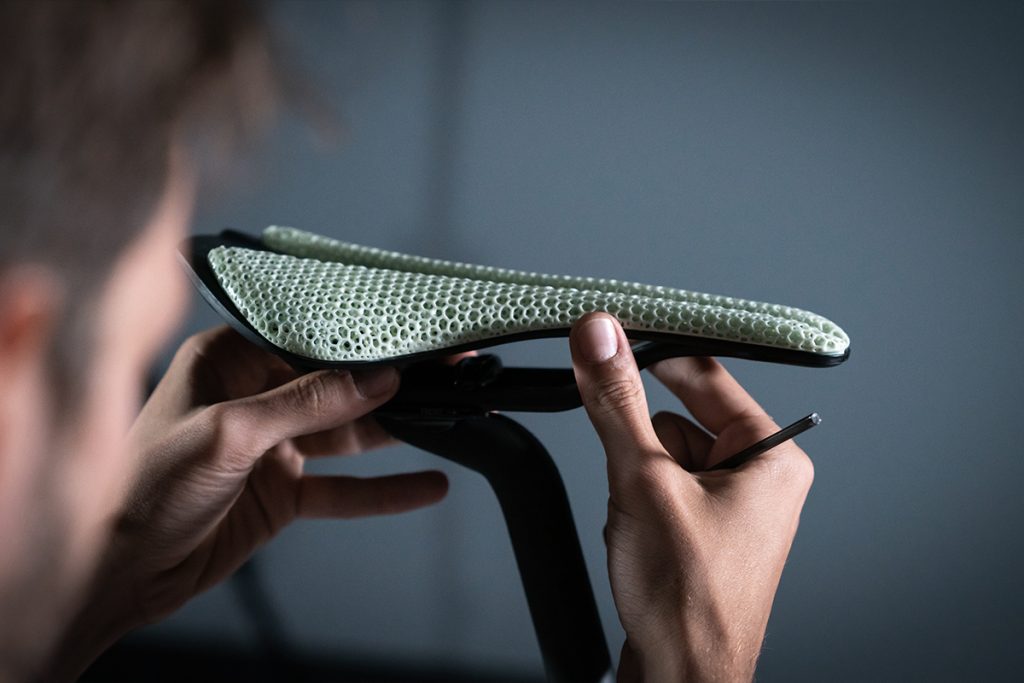
SETBACK
The final, and perhaps most difficult, saddle adjustment is setback. Saddle setback refers to adjustments to the saddle’s forward and aft positioning, moving the saddle along its rails either towards the front or back of the bike. Saddle setback plays a major role in establishing a healthy pedal stroke, with overly forward positioning often leading to knee pain, while saddles set too far back result in poor bike fit, inefficient pedalling and difficulty maintaining a comfortable position on the bike.
Setback adjustments should take into consideration knee position in relation to pedal stroke, as well as overall reach from saddle to handlebars. Dialling in the perfect placement can take a bit of time and several adjustments—a process that can be made easier through the help of a bike fit expert.
Lastly, keep in mind that an adjustment to one of these four saddle position factors can often impact the others. Additional downward tilt, for example, can increase saddle height while adjustments in saddle height can impact setback.
To learn more about saddle position and finding the right setting, explore the following video as well as our entire series of How-To Tutorials for more tips on optimizing your favourite ride.

